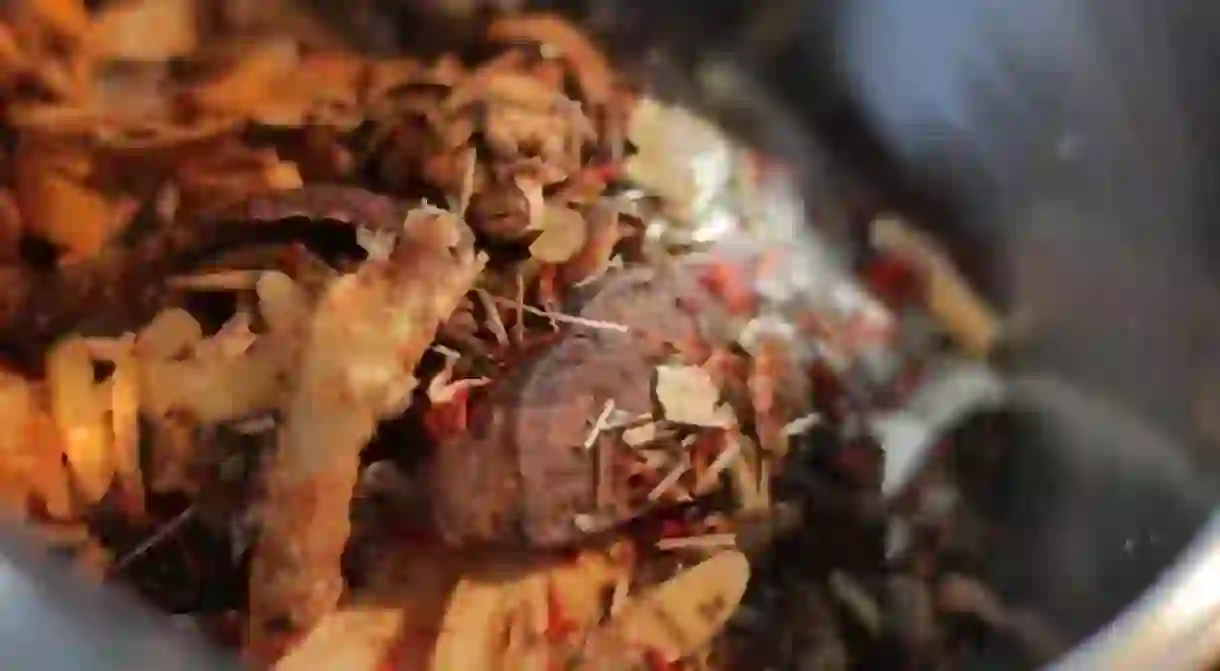11 Chinese TCM Ingredients Scientifically Proven to Improve Your Health

Traditional Chinese Medicine (TCM) is an incredibly complex system used to balance health. Focused on consuming foods that keep the body’s humors in check, it uses ingredients including herbs, fruits, and pulses that have some great health benefits. Here’s our pick of the top 11.
Ginseng (rénshēn, 人参)
This gnarled rhizome is perhaps one of the best known of the Chinese herbs. The name literally translates to “human root” because the shape of it vaguely resembles a human body – in TCM, it’s thought that the shape symbolizes ginseng’s potent ability to cure human ills, replenish qi (vital energy), and warm the body. Aside from that, ginseng is an antioxidant, which helps rid the body of free radicals. There is also some evidence that ginseng boosts the immune system, which can help the body fight off infection and disease.

Walnuts(hétáo, 核桃)
The Chinese have long believed that eating walnuts can sharpen the mind and boost concentration and memory. This stems from the fact that the crinkled appearance of a walnut resembles the folds of a human brain – and according to TCM principles, like replenishes like. TCM also considers walnuts as a warming food, which means they’re a great winter time snack. Walnuts are also chock full of goodness as well, including omega-3 fatty acids, vitamin E and folates – all of which aid the heart and brain.

Cinnamon (ròuguì, 肉桂)
TCM says the branches (guì zhī, 桂枝) and bark (ròuguì, 肉桂) of this large tropical tree warm the body, invigorate the circulation, and harmonize the energy of the upper and lower body. Modern studies demonstrate that cinnamon helps to reduce allergic reactions and increases circulation. You’ll most often find it combined with other TCM ingredients mixed into a tea, or bobbing around in a hot pot.

Ginger (shēngjiāng, 生姜)
This spicy rhizome is said to benefit digestion, neutralize poisons in food, ventilate the lungs and warm circulation to the limbs. Today, ginger is commonly used in cooking, as well as in teas and candies and has been shown to help counteract nausea and aid digestion. It is also simply delicious in the winter time when steeped with red sugar and jujubes.

Lotus seed (liánzǐ, 莲子)
Lotus seed may not be as famous as ginseng, but it is ubiquitous in China, found in soups, teas and even fresh in stir fries. In TCM, it is thought to improve the functions of the spleen and kidneys, as well as helping regulate diarrhea. Lotus seeds are also rich in calcium, phosphorus and potassium, which are great for nourishment – and the fiber improves digestion as well.

Hawthorn berries (shānzhā, 山楂)
Though best known as the primary ingredient of the much beloved haw flake candies, hawthorne is actually a common ingredient used in traditional Chinese medicine. The berry itself is incredibly sour, like a crabapple, and traditionally used as a digestive aid and to reduce indigestion and heartburn. There is some evidence in modern research that it also might help treat cardiac weakness. But best off, it’s just a delicious addition to candies, teas and baked sweets.

Goji berries (gǒuqǐ zi, 枸杞子)
Also known as wolfberries, goji berries have been used as an herbal remedy for over 3,000 years, with their first recorded use as such showing up in the pivotal The Classic of Herbal Medicine. They are thought to be anti-ageing because they can benefit the kidneys and to nourish jing, or kidney essence, which underpins human vitality. These vibrant and lightly floral berries are also rich in vitamin C, antioxidants, fiber and vitamin A, and generally come in dried form, used in teas and several dishes to improve nutrition and eyesight.

Jujube (hóngzǎo, 红枣)
Deeply red jujube dates have been used in TCM recipes for centuries, the sweet, spongy fruits often steeped in teas or cooked in congee (rice porridge) to aid circulation and to bolster qi. These fruits are thought to promote blood flow, calm the mind, and soothe the nerves, and are often used to treat insomnia. They are also high in vitamins B and C, and can help lift mood and soothe anxiety.

Licorice root (gāncǎo, 甘草)
Licorice root is thought to replenish vital energies, help stomach functions, clear out heat and control coughing. Due to its sweetness, it’s also often used in TCM herb tonics to ease bitterness and to help ‘harmonize’ the harshness of their flavors – basically to help the medicine go down! It has also been depression, cold, flu, cough, heartburn and many more. It is used in Chinese medicine to harmonize all the other medicinal herbs that goes into a formula. In addition, there is some evidence that licorice can help with swelling, itching and redness that goes along with skin rashes.

Aged mandarin peel (chénpí, 陈皮)
Mandarin tangerine peels, after being sundried, are often used as a warming agent to help the functions of the spleen and stomach, and balancing qi. Like the citrus fruit itself, mandarin peel is also rich in vitamin C, and antioxidants are also found in higher concentrations in the peel, which means more fighting off of free radicals. You’ll most often find mandarin peels used in teas, as well as a flavoring in stir fries with meat.

Mung beans (lǜdòu, 绿豆)
These little pulses are often eaten in the summertime as they are an essential yin food that, according to TCM, helps to detoxify the body, expel heat and add moisture. You’ll find sweet mung bean soups, as well as mung bean added into pastries and eaten for breakfast in congee. These little nutritional powerhouses are also packed with potassium, magnesium, folate, fiber, and vitamin B6, which can help smooth over mood swings and control stress. The fiber also helps to regulate digestion and keep things moving.














